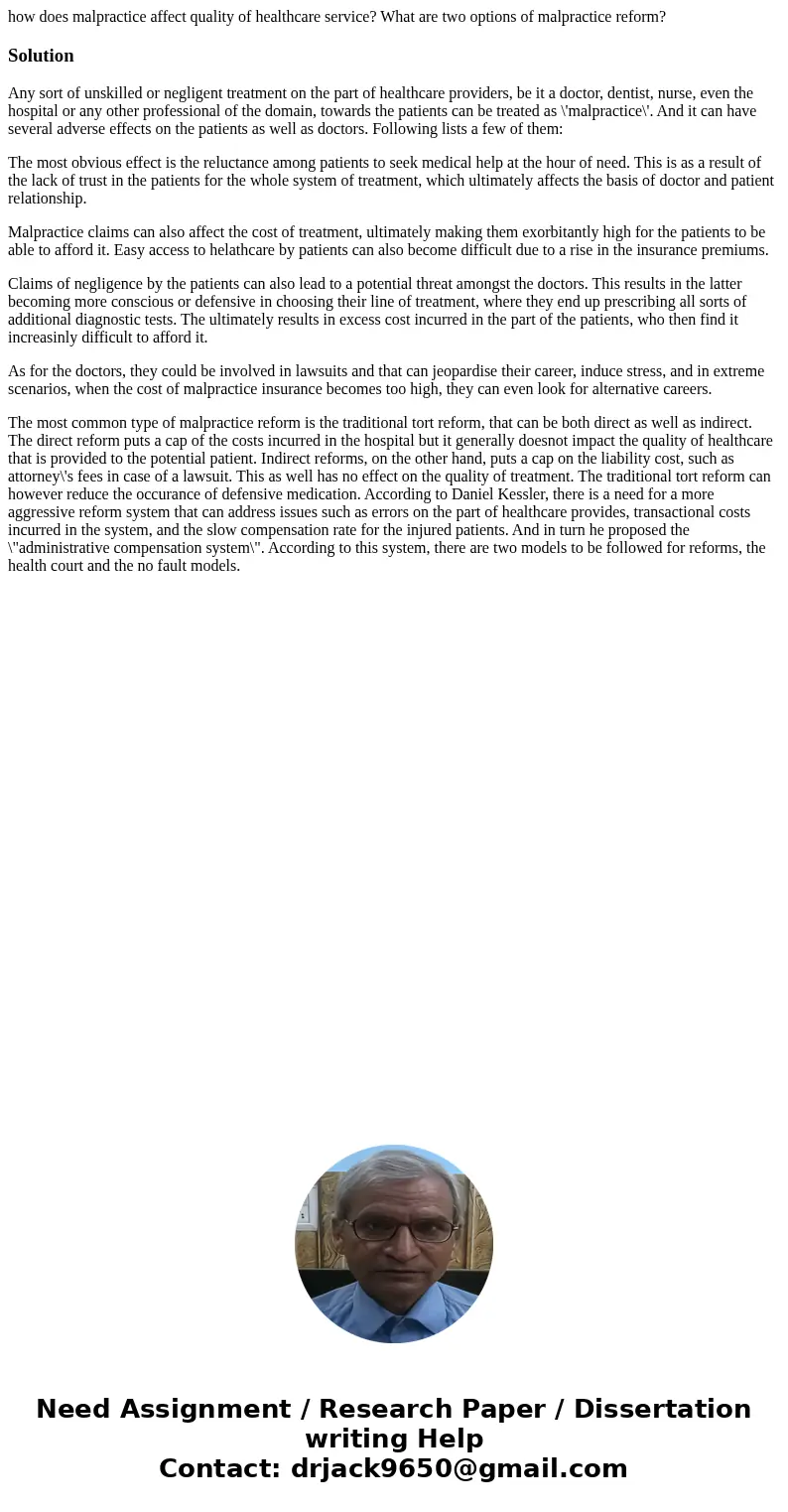how does malpractice affect quality of healthcare service Wh
how does malpractice affect quality of healthcare service? What are two options of malpractice reform?
Solution
Any sort of unskilled or negligent treatment on the part of healthcare providers, be it a doctor, dentist, nurse, even the hospital or any other professional of the domain, towards the patients can be treated as \'malpractice\'. And it can have several adverse effects on the patients as well as doctors. Following lists a few of them:
The most obvious effect is the reluctance among patients to seek medical help at the hour of need. This is as a result of the lack of trust in the patients for the whole system of treatment, which ultimately affects the basis of doctor and patient relationship.
Malpractice claims can also affect the cost of treatment, ultimately making them exorbitantly high for the patients to be able to afford it. Easy access to helathcare by patients can also become difficult due to a rise in the insurance premiums.
Claims of negligence by the patients can also lead to a potential threat amongst the doctors. This results in the latter becoming more conscious or defensive in choosing their line of treatment, where they end up prescribing all sorts of additional diagnostic tests. The ultimately results in excess cost incurred in the part of the patients, who then find it increasinly difficult to afford it.
As for the doctors, they could be involved in lawsuits and that can jeopardise their career, induce stress, and in extreme scenarios, when the cost of malpractice insurance becomes too high, they can even look for alternative careers.
The most common type of malpractice reform is the traditional tort reform, that can be both direct as well as indirect. The direct reform puts a cap of the costs incurred in the hospital but it generally doesnot impact the quality of healthcare that is provided to the potential patient. Indirect reforms, on the other hand, puts a cap on the liability cost, such as attorney\'s fees in case of a lawsuit. This as well has no effect on the quality of treatment. The traditional tort reform can however reduce the occurance of defensive medication. According to Daniel Kessler, there is a need for a more aggressive reform system that can address issues such as errors on the part of healthcare provides, transactional costs incurred in the system, and the slow compensation rate for the injured patients. And in turn he proposed the \"administrative compensation system\". According to this system, there are two models to be followed for reforms, the health court and the no fault models.

 Homework Sourse
Homework Sourse